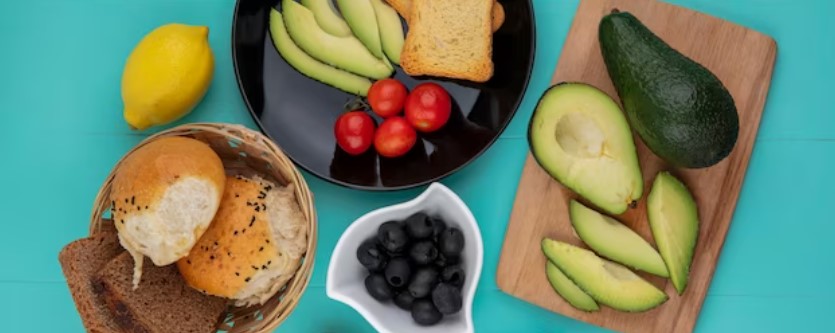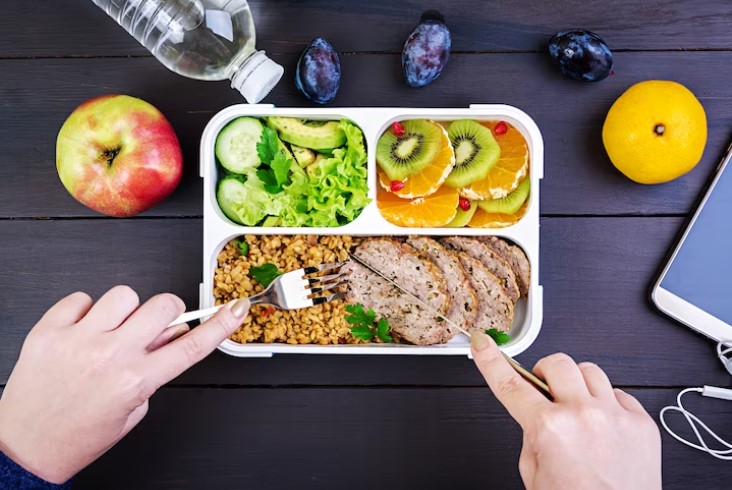Eating a healthy and balanced diet is essential for maintaining good health and wellness. However, many individuals struggle with this due to a variety of challenges. One of the most common challenges is the lack of time to plan and prepare healthy meals. With busy work schedules, social activities, and other obligations, it can be difficult to find the time to plan, shop for, and cook nutritious meals. Additionally, eating healthy can also be seen as more expensive, with many people feeling limited by their budget. Fresh fruits and vegetables, lean proteins, and whole grains can be more expensive than processed and pre-packaged foods.
These challenges can make it difficult to maintain a healthy diet, and often result in individuals resorting to quick and unhealthy food options, such as fast food or processed snacks. This can have a negative impact on overall health and well-being, increasing the risk of chronic diseases such as heart disease, diabetes, and obesity. Furthermore, a diet lacking in essential nutrients can also negatively affect athletic performance and hinder personal and professional goals.
Despite these challenges, it is possible to eat healthy on a budget and with a busy schedule. By incorporating techniques such as meal planning, utilizing leftovers, taking advantage of grocery sales, and cooking in bulk, individuals can save time and money while still maintaining a nutritious diet. Additionally, finding healthy snacks that can be easily taken on-the-go, such as fruits, nuts, or yogurt, can help overcome the lack of time to sit down for a full meal. With a little effort and creativity, eating healthy can be made more achievable and accessible to everyone, regardless of their budget or schedule.
1. Overview of the benefits of eating healthy

Eating a healthy and balanced diet provides numerous benefits that positively impact overall health and well-being. One of the most significant benefits is the reduced risk of chronic diseases such as heart disease, type 2 diabetes, and certain cancers. A diet rich in fruits, vegetables, whole grains, lean proteins, and healthy fats can help lower cholesterol, regulate blood sugar levels, and reduce the risk of chronic illnesses. Furthermore, consuming a diet that meets daily nutrient requirements can improve energy levels and boost the immune system, leading to better overall health.
In addition to improving physical health, eating healthy can also positively impact mental health. A diet rich in fruits, vegetables, whole grains, and lean proteins provides essential vitamins and minerals that support brain function and can help reduce the risk of depression and anxiety. Furthermore, a nutritious diet can also lead to better sleep, increased focus and productivity, and improved mood.
For athletes and those looking to improve their athletic performance, a healthy diet is crucial. Consuming a balanced diet that provides essential nutrients and enough calories to support physical activity can improve energy levels, endurance, and recovery. Additionally, a diet rich in vitamins and minerals such as iron, calcium, and vitamin D can help improve bone health and reduce the risk of injury.
In conclusion, the benefits of eating a healthy and balanced diet are numerous and far-reaching. From reducing the risk of chronic diseases to improving athletic performance and mental health, the impact of a nutritious diet on overall health and well-being cannot be overstated. While eating healthy can sometimes be a challenge, the benefits are well worth the effort, and there are numerous resources available to help individuals make informed choices about what they eat. By incorporating healthy food choices into daily life, individuals can reap the rewards of a healthier and happier lifestyle.
2. Tips for making healthy eating convenient

Eating healthy doesn’t have to be time-consuming or inconvenient. With a little bit of planning and preparation, anyone can make healthy eating a regular part of their daily routine. One of the most effective ways to make healthy eating convenient is by meal planning and preparation. This involves taking the time to plan out meals and snacks for the week, and prepping ingredients in advance so they’re ready to go when needed.
Another tip for making healthy eating convenient is to prepare healthy snacks for on-the-go. This can include things like fresh fruit, raw veggies, yogurt, or nut-based snacks. Having healthy snacks readily available can help prevent the urge to reach for junk food when hunger strikes.
Making healthy substitutions in favorite recipes is another way to make eating healthy more convenient. For example, instead of using high-fat ingredients like butter or cream, try using healthier alternatives such as olive oil or almond milk. Additionally, incorporating seasonal produce into meals can not only add variety, but also save money by taking advantage of produce that is in abundance and often less expensive.
Finally, utilizing leftovers in creative ways can be a great way to make healthy eating more convenient. Leftovers can be transformed into new meals, such as using leftover grilled chicken in a salad or repurposing last night’s roasted vegetables in a stir-fry. Utilizing leftovers not only makes mealtime easier, but it also helps reduce food waste and save money.
In conclusion, there are many tips and tricks for making healthy eating convenient and achievable for anyone. Whether it’s through meal planning and preparation, healthy snack options, recipe substitutions, or creative use of leftovers, there’s no shortage of ways to make healthy eating a part of daily life. By taking the time to incorporate these techniques, individuals can improve their health, save time, and enjoy delicious, nutritious meals every day.
3. Strategies for making healthy eating affordable

One of the biggest challenges of eating healthy is affordability. However, there are several strategies that can help make healthy eating more accessible for everyone.
Shopping for seasonal and local produce is one such strategy. Not only is seasonal produce often fresher and more flavorful, but it is also typically less expensive because it is in abundance. By taking advantage of seasonal and local produce, individuals can save money while still incorporating a variety of fruits and vegetables into their diet.
Another strategy for making healthy eating affordable is to take advantage of grocery store sales and discounts. By checking flyers and shopping during sales, individuals can save money on healthy items like whole grains, lean proteins, and fresh produce.
Cooking in bulk and freezing meals for later is another cost-saving strategy. By preparing large quantities of meals at once and storing them in the freezer, individuals can save time and money by having healthy meals ready to go when needed.
Finally, avoiding pre-packaged and processed foods is another way to make healthy eating more affordable. These types of foods are often more expensive and less nutritious than whole, unprocessed foods. By focusing on whole, unprocessed foods and avoiding pre-packaged options, individuals can save money while still maintaining a healthy diet.
In conclusion, there are many strategies for making healthy eating more affordable and accessible. Whether it’s through shopping for seasonal and local produce, taking advantage of grocery store sales and discounts, cooking in bulk and freezing meals for later, or avoiding pre-packaged and processed foods, individuals can eat healthy without breaking the bank. By incorporating these strategies into daily life, individuals can enjoy the numerous benefits of a nutritious diet while still staying within their budget.
Conclusion
In conclusion, healthy eating is a critical aspect of overall health and well-being. By incorporating healthy eating habits into daily life, individuals can reduce the risk of chronic diseases, improve athletic performance, and enhance their overall health and well-being.
While healthy eating can seem like a challenge, there are several ways to make it more convenient and affordable. Meal planning and preparation, preparing healthy snacks, making healthy substitutions in favorite recipes, utilizing leftovers in creative ways, shopping for seasonal and local produce, taking advantage of grocery store sales and discounts, cooking in bulk and freezing meals for later, and avoiding pre-packaged and processed foods are all strategies that can help make healthy eating more manageable.
In summary, making healthy eating a priority is essential for overall health and well-being. By taking advantage of the tips and strategies outlined above, individuals can make healthy eating more convenient and affordable, and enjoy all the benefits that come with it.



